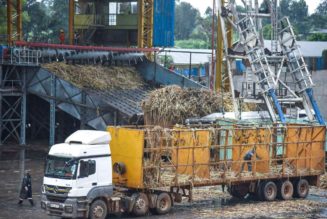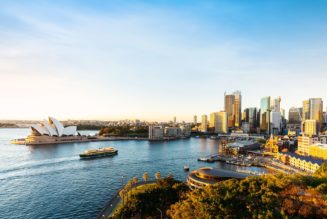Columnists
What we’re doing to cut losses during petroleum transportation and storage
Monday March 25 2024

Kenya Pipeline Company (KPC) petroleum storage facility in the Industrial area, Nairobi. FILE PHOTO | JEFF ANGOTE | NMG
In the heart of Nairobi, amidst the hustle and bustle, a driver found himself facing an unexpected dilemma. It was a hot afternoon, and the fuel gauge signalled that a stop for a refill was imminent. Remembering a piece of advice from a fellow driver, the driver decided to wait until evening, anticipating cooler temperatures that could potentially enhance his car’s performance and fuel efficiency.
But did you know that behind this seemingly routine decision lay a web of intricate scientific principles governing the gain and loss of petroleum products during their journey from source to destination?
Indeed, product loss, a common phenomenon in the petroleum industry, occurs at various stages of handling such as storage, transportation, and loading into pipelines or trucks. Evaporation, measurement inaccuracies, and unauthorised activities contribute to this decrease in product volume. Within the petroleum sector, two types of losses exist—actual and apparent.
Actual product loss involves spillages, leakages, theft, and operational losses. Apparent loss occurs without a physical escape of the product from the delivery chain. Factors like equipment inaccuracies, density measurement errors, temperature, density and pressure variations during transportation contribute to apparent losses.
Despite advancements in technology and industry practices to minimise losses, the inherent nature of petroleum products results in some unavoidable losses during transportation and handling. Governments worldwide set allowable loss margins for pipeline companies, reflecting global best practices.
In Kenya, the Ministry of Energy & Petroleum and the Energy and Petroleum Regulatory Authority (Epra) have established a minimum allowable product loss and gain margin of 0.25 percent. In 2023, Kenya Pipeline Company (KPC) reported an average product loss of 0.06 percent, surpassing both internal and Epra thresholds.
The set threshold is in accordance with global best practices guided by the accuracy of measurement equipment and applicable technologies. To this end, the Kenyan government is aiming for a target of 0.1 percent, which is applicable in Europe and other countries where fuel is transported through a pipeline.
At KPC, we have been actively working on improving the pipeline systems and infrastructure and our efforts in addressing these challenges and minimising losses can be reflected in the continuous security enhancement measures and monitoring along the pipeline network. This includes the recent rollout of a leak detection system.
We have also commissioned bottom-loading facilities (BLF) in our Nakuru, Eldoret and Kisumu depots. The BLF at the Nairobi Terminal is scheduled for completion in the next 10 months. Bottom loading of products to road tankers is not only environmentally friendly but also critical in minimising considerable losses.
Bottom loading not only aligns with environmental conservation goals but also minimises losses from evaporation.
KPC’s commitment to environmental sustainability is further demonstrated through the conversion of storage tanks to dome-shaped for diesel and floating roofs for petrol.
Beyond the phenomena that explain the natural losses and gains of petroleum products, the integrity of storage and transportation infrastructure is as important as the product itself and deserves attention. Leaks, permeation, and improper handling can lead to both gain and loss of petroleum products.
KPC is enhancing this through investing in a robust infrastructure and adhering to best practices which ensure a more efficient and sustainable supply chain for our petroleum products.
In conclusion, navigating the complexities of petroleum product transportation requires a deep understanding of the dynamic causes behind product losses and gains. KPC’s commitment to efficiency, sustainability, and innovation positions it as a leader in the industry, continually striving to minimize losses and optimize the supply chain thus, ultimately ensuring a smoother ride for drivers like Wanyama.
The writer is the Kenya Pipeline Company Managing Director.









